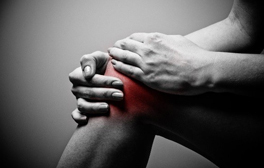Osteoarthritis | Houston, TX
Osteoarthritis Facts
 Osteoarthritis (OA) affects many people. One of every two Americans develop knee OA by age 85 and one in four develop hip OA. It’s no longer a disease of older age – it’s also affecting people under 50 years. Approximately 22.7 million Americans have limitations with activities of daily living, and loss of work days due to OA. Estimated treatment costs of OA expenditures range between $73 – $185.5 billion each year! This is only second to heart disease and trauma.
Osteoarthritis (OA) affects many people. One of every two Americans develop knee OA by age 85 and one in four develop hip OA. It’s no longer a disease of older age – it’s also affecting people under 50 years. Approximately 22.7 million Americans have limitations with activities of daily living, and loss of work days due to OA. Estimated treatment costs of OA expenditures range between $73 – $185.5 billion each year! This is only second to heart disease and trauma.
Osteoarthritis – Making the Diagnosis
A careful history determines the patient’s pattern of symptoms and provides clues to whether they are characteristic of OA or another type of joint disease. Lab tests are used to rule out autoimmune disease. The physical examination of the joint(s) typically can reveal pain on movement, limitation of movement and swelling.
Radiographic exams can confirm the diagnosis. Typically, joint space narrowing is seen on X-rays along with bone spurs. MRIs may detect early cartilage changes and inflammation before tissue loss is seen on x-rays. Ultrasound may detect soft tissue changes, osteophytes and increased fluid in the joint.
Traditional Osteoarthritis Treatments
Traditionally treatment focuses on physical therapy and home exercise programs to increase strength and range of motion along with nonsteroidal antiinflammatory medications (NSAIDS) for pain in the early stages. NSAIDs have many serious adverse effects on many organ systems and they might speed up degeneration of cartilage, so we don’t recommend using them in most cases. Bracing and use of heat/cold therapies may also provide some relief. As the disease progresses injection therapies are offered. Traditionally, these include corticosteroids or viscosupplementation injections. Steroids treat pain, but the effects are short-lived – only about 4 months. There is a major downside to corticosteroids – they may accelerate bone and cartilage degeneration. On the other hand, viscosupplementation, or Hyaluron, contains a main ingredient found in healthy joints. It provides cushioning and lubrication and can be effective in many cases. If a patient has not improved and the OA has progressed, eventually surgical joint replacement is recommended. There have been major improvements in joint replacement surgery with reduced recovery times but there are serious potential adverse effects such as: infection, blood clot, chronic pain, dislocations, and fractures.
Estimated treatment costs of OA expenditures range between $73 – $185.5 billion each year! This is only second to heart disease and trauma.
Modern Regenerative Treatments
At Houston Sports Medicine, we specialize in the latest regenerative techniques and deliver many treatments using ultrasound guidance. Below are some of many treatment options:
Prolotherapy uses concentrations of dextrose to stimulate the body’s natural healing ability. This treatment can attract growth factors to the injured site. It has been shown in many studies to decrease pain, increase range of motion and improve function. Treatments are given at intervals to allow time for recovery.
PRP, or platelet rich plasma, uses the patient’s own platelets as they are a rich source of growth factors that are thought to attract stem cells and other healing factors. A blood sample is drawn and is spun into layers, so the platelets can be concentrated. Platelet rich plasma (PRP) can be injected into the joint at 3-4 monthly intervals. PRP has many studies showing efficacy and has been used by many professional athletes.
Stem cells is the new buzz term these days. Research is still underway to determine best how to use this treatment in orthopedic/regenerative medicine. There are some stem cell options that are allowed in the U.S. now. Be careful against claims made as the research is still young and more is needed. We are knowledgeable in this arena and can talk with you more in detail about your options if these treatments interest you.
